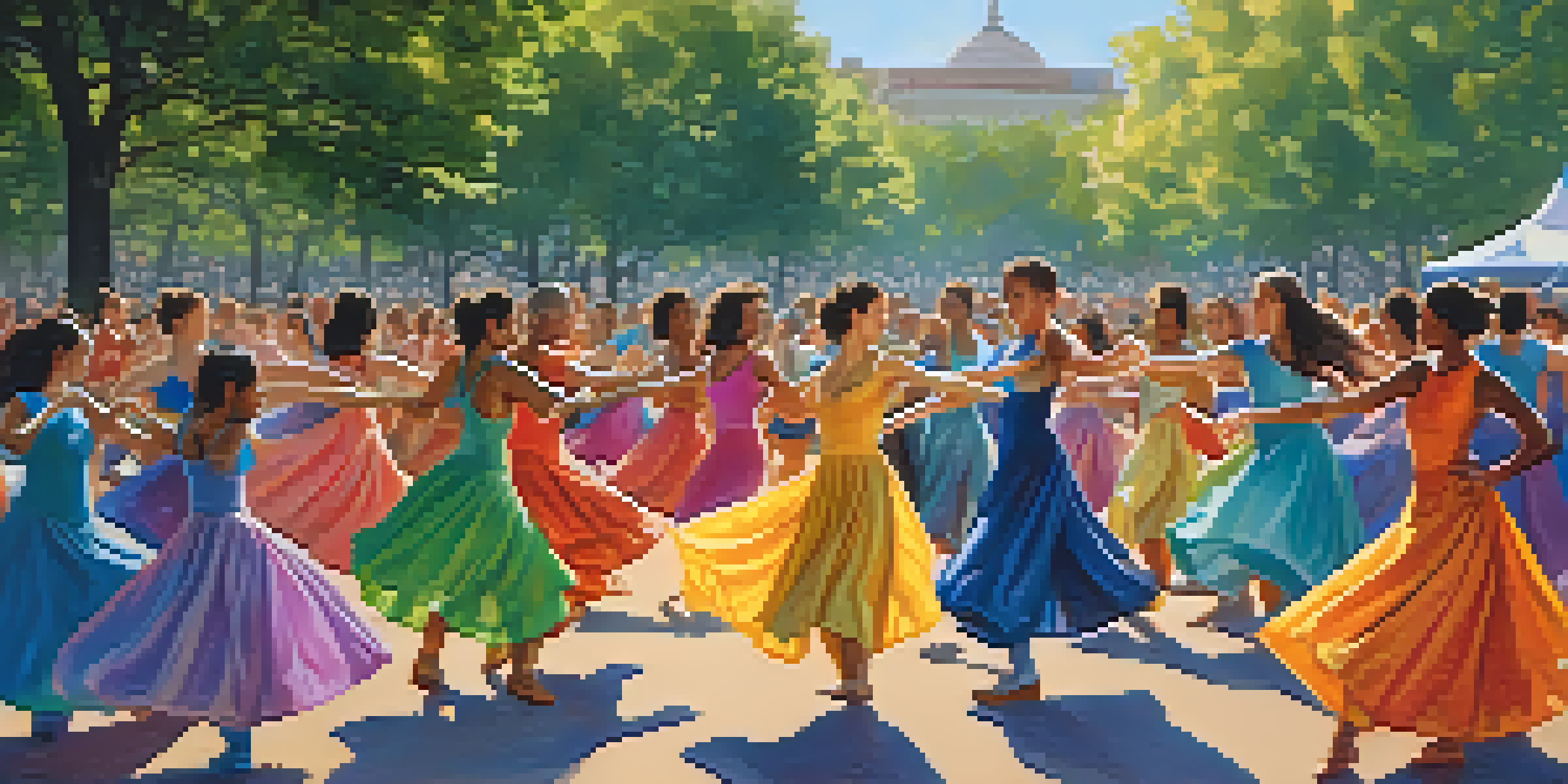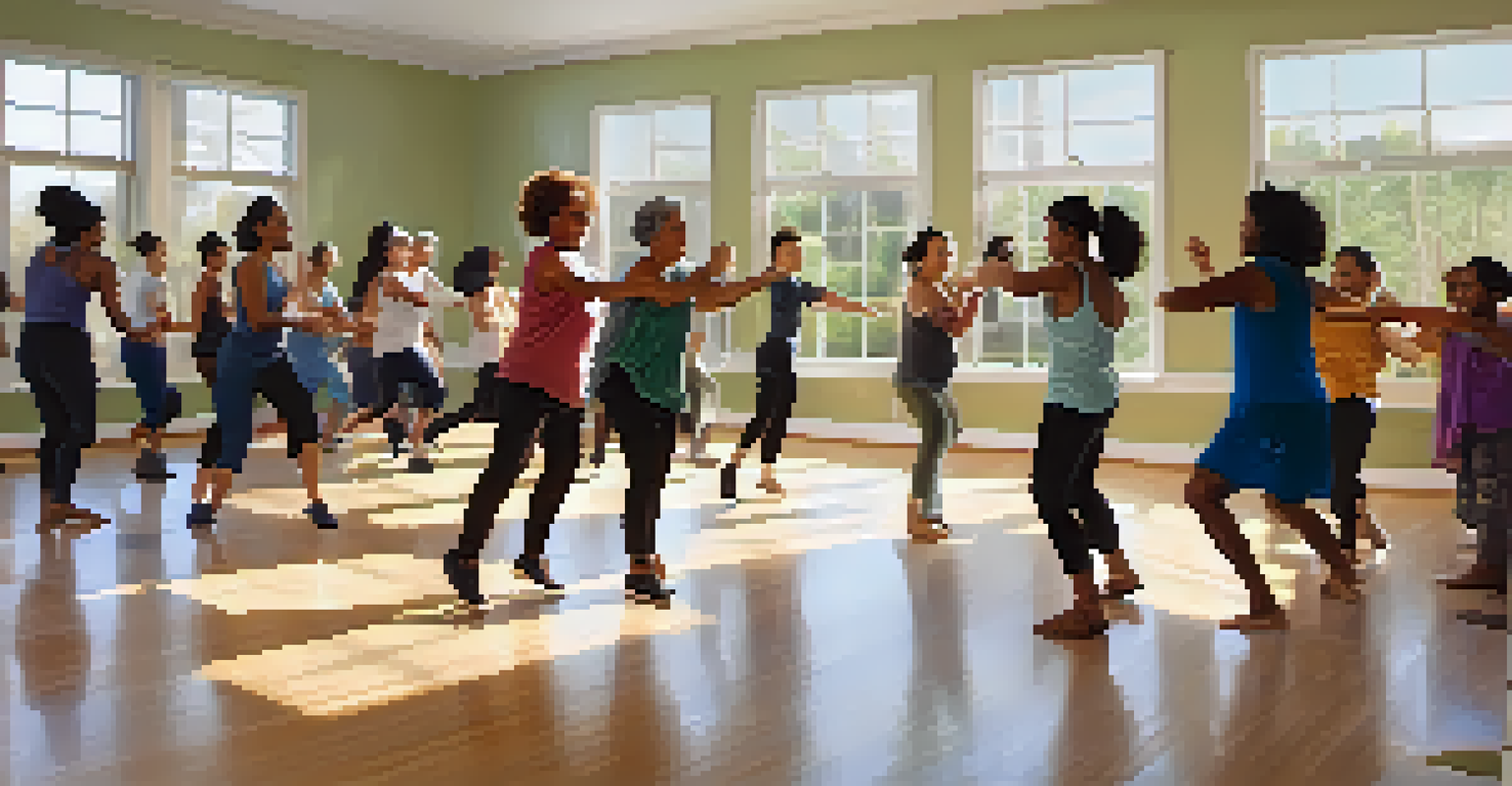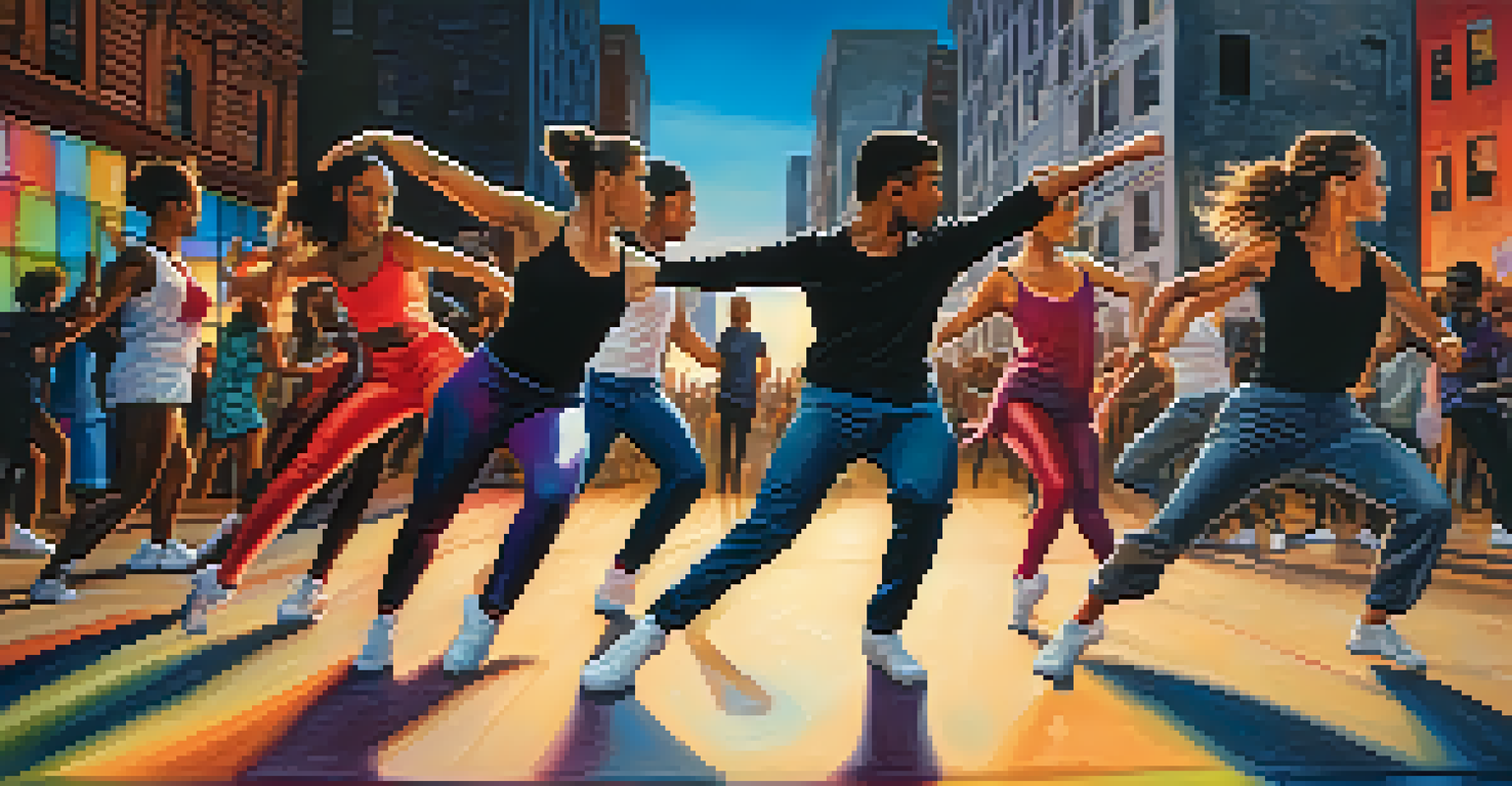Choreography for Social Change: Dance as a Form of Activism

The Power of Dance as a Form of Expression
Dance has long been a universal language, transcending barriers of culture and communication. It can express the deepest emotions and experiences, making it an ideal medium for activism. When people dance, they share their stories, creating a sense of unity and understanding among diverse audiences.
Dance is the hidden language of the soul.
Through movement, dancers can highlight social issues, evoke empathy, and inspire action. This form of expression often resonates on a visceral level, connecting individuals to causes that may otherwise feel distant. Just as a powerful song can ignite a movement, so too can a compelling dance piece.
For instance, the 'Dancing for Change' movement has utilized flash mobs to raise awareness about various social justice issues. These spontaneous performances create a shared experience that not only entertains but also educates and mobilizes communities.
Historical Roots of Dance as Activism
Throughout history, dance has been intertwined with social movements, serving as a tool for protest and change. From the civil rights movement to LGBTQ+ rights, dance has played a crucial role in expressing dissent and solidarity. Historical figures like Alvin Ailey used dance to portray the African American experience, making powerful statements about race and identity.

The use of dance in activism can be traced back to ancient rituals and celebrations that called for change. These cultural dances often addressed societal issues, reflecting the heartbeat of the community. In modern times, this tradition continues as choreographers draw inspiration from their heritage to address contemporary challenges.
Dance as a Voice for Change
Dance serves as a powerful medium for activism, allowing individuals to express social issues and inspire collective action.
For example, the 'Breakin' Convention' in the UK showcases street dance as a form of protest, highlighting the struggles of urban communities. Such events not only celebrate the art of dance but also reinforce its power as a vehicle for change.
Modern Choreographers Leading the Charge
Today, numerous choreographers are using their platforms to advocate for social change. Artists like Liz Lerman and Bill T. Jones blend dance with activism, addressing issues such as climate change, racial injustice, and mental health. Their work often goes beyond the stage, engaging communities and fostering dialogue around critical topics.
To be in a state of dance is to be in a state of grace.
These choreographers understand that movement can communicate messages that words sometimes cannot. By weaving narratives into their performances, they invite audiences to reflect and take action. Their innovative approaches often challenge traditional notions of dance, making it accessible to broader audiences.
For instance, the 'Dance for Democracy' initiative encourages dancers to create pieces that encourage civic engagement. This initiative highlights how dance can spur conversations about voting, representation, and community involvement.
The Role of Community in Dance Activism
Community engagement is at the heart of dance activism. Local groups often come together to create performances that reflect their unique experiences and challenges. This collaborative approach not only amplifies voices but also fosters a sense of belonging and purpose within communities.
Workshops and community classes allow individuals to express their thoughts and feelings through movement, creating a safe space for dialogue. These gatherings empower participants to share their stories, building connections that can lead to collective action. When communities dance together, they become stronger advocates for their causes.
Community Empowerment Through Dance
Engaging communities in dance activism fosters a sense of belonging and amplifies voices, creating a platform for shared experiences.
An example of this is the 'Dancing for Justice' project, where community members collaborate to choreograph pieces that address local issues. These performances serve as both a creative outlet and a rallying point for change, demonstrating the impact of community-driven dance.
Dance as a Tool for Healing and Resilience
Dance not only serves as a form of protest but also as a powerful tool for healing. In times of trauma or social upheaval, movement can offer solace and a sense of agency. Many organizations use dance therapy to help individuals process their emotions and reclaim their bodies, promoting resilience in the face of adversity.
Choreographers are increasingly incorporating themes of healing into their work, addressing issues such as trauma, loss, and grief. This approach allows audiences to connect with the emotional depth of the performance, fostering empathy and understanding. By sharing their personal experiences through dance, artists create a collective narrative of healing.
For instance, the 'Healing Through Dance' workshops provide a safe space for marginalized communities to express their struggles and triumphs. These initiatives highlight how dance can be a source of strength, encouraging individuals to rise above their circumstances.
The Global Impact of Dance Activism
Dance activism is not confined to one culture or region; it has a global reach. Across the world, artists are using dance to address pressing social issues, from climate change to gender equality. This international movement showcases the power of dance to unite people around shared goals, transcending borders and languages.
Global events like the 'International Dance Day' celebrate the role of dance in social change, encouraging participation from diverse communities. These events often highlight the intersectionality of various social issues, amplifying voices from different backgrounds. In this way, dance becomes a catalyst for global dialogue.
Healing and Resilience in Movement
Dance not only protests but also promotes healing, helping individuals process emotions and reclaim agency in challenging times.
For example, the 'Dance for Climate Action' campaign brings together dancers from various countries to perform in solidarity against climate change. These performances not only raise awareness but also demonstrate the collective power of movement in advocating for a sustainable future.
The Future of Dance and Activism
As we look to the future, the intersection of dance and activism will likely continue to evolve. With advancements in technology and social media, dancers can reach wider audiences and mobilize communities more effectively than ever before. This digital era allows for innovative approaches to activism, making dance an even more potent form of expression.
Moreover, as social issues become more complex, the narratives conveyed through dance will need to adapt. Choreographers will continue to explore new themes and styles, reflecting the changing landscape of activism. The future of dance will be characterized by inclusivity, creativity, and an unwavering commitment to social justice.

In conclusion, the role of choreography in social change is more important than ever. As artists harness the power of dance to advocate for justice, we can expect to see a vibrant tapestry of movements that inspire, challenge, and unite us all.